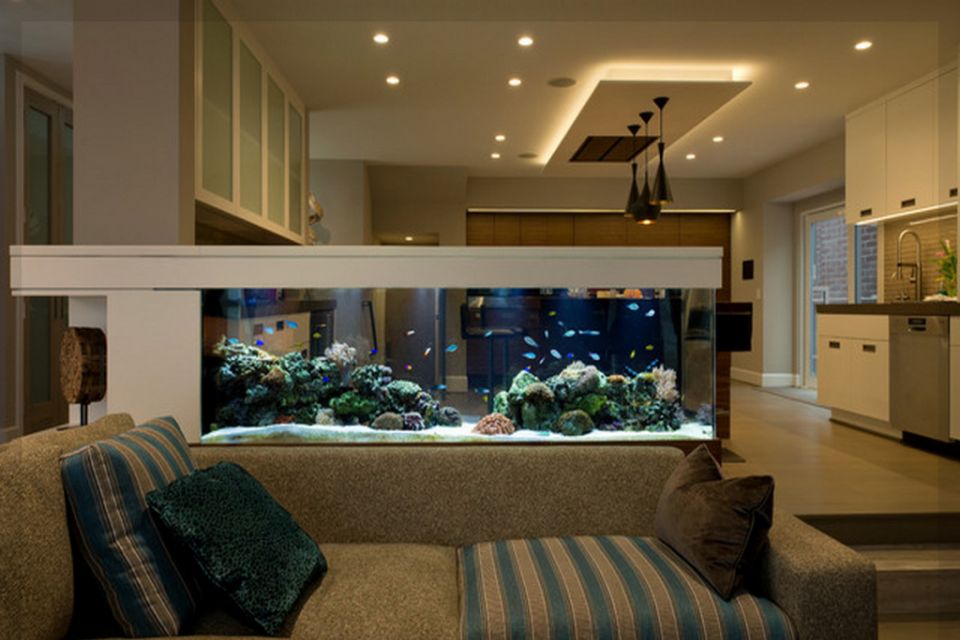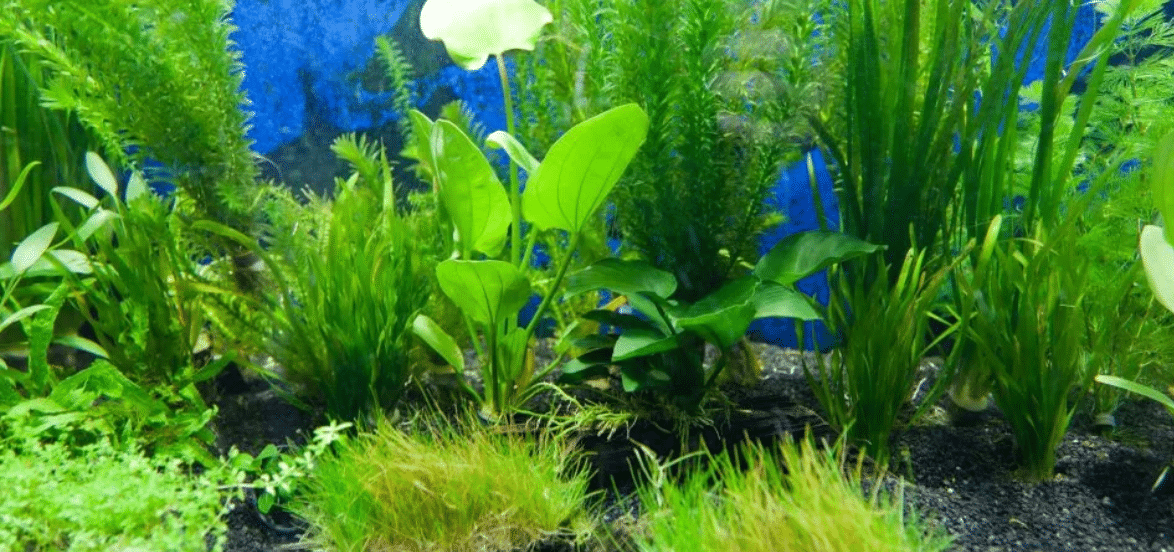
It is not uncommon for algae to be associated with the abandonment of aquaristics, as inexperienced aquarists in particular are often unable to cope with this problem. But this does not have to happen, because there is a way for every type of algae to fight the plague and to prevent a possible spread of the algae. How to recognize your algae species in the aquarium and fight them so effectively is shown in the following guide article about algae in the aquarium.

Table of Contents
What are algae?
Different from what was thought next, the algae term conceals a diverse selection of living creatures. In fact, all plant species that do not belong to the so-called higher plants and mosses belong to the algae family. The size of the algae does not play a role at all: there are algae in small single-cell form, filamentous algae and macroalgae, which can reach a size of up to sixty metres.
Just like viruses, microorganisms and bacteria, algae are always present in the environment. Algae are irreplaceable for the environment and play an important role in the balance of these biotopes.
Also in the aquarium algae often play an important role for the biological equilibrium. After all, algae usually only develop when there is a (nutrient) deficiency in an aquarium. Algae have often also specialised in such a deficiency. They therefore thrive there magnificently and help to combat the deficiency.

Why do algae form in your aquarium?
A plague of algae can have very different causes. Often it is not the fault of the aquarist: the water values and the nutrients in the water, as well as the water change often play an important role. However, algae growth can also be caused by numerous other factors – in the following we will show you the most common causes.
Algae growth caused by water properties

If you take a look at our own tap water, some problems already arise here. Due to the high use of fertilizers in agriculture, increased nitrate levels can easily occur in groundwater, which can then be released into tap water. In addition, since the limit values for nitrate in groundwater vary greatly from country to country, tap water in large parts of Europe is heavily polluted with phosphate and nitrate.
But also the silicic acid, which dissolves from a certain silicon, can be a reason for the formation of algae in the aquarium, especially the so-called diatoms. A closer look reveals that this silica is released from the silicon by rainwater and thus gets into the groundwater. Therefore, the infestation of diatoms is very probable especially in the initial phase of an aquarium, especially during the running-in period: especially in aquariums equipped with gravel.
Algae growth caused by overfeeding
Feeding also plays an important role in the case of algae infestation, as the scattered feed settles on the ground in the event of possible overfeeding. As a result, the food rots and increases the nitrate in the tank enormously. These high amounts of nitrate can often no longer be absorbed by the aquarium plants and thus provide an optimal breeding ground for algae in the aquarium.
Algae growth caused by water change
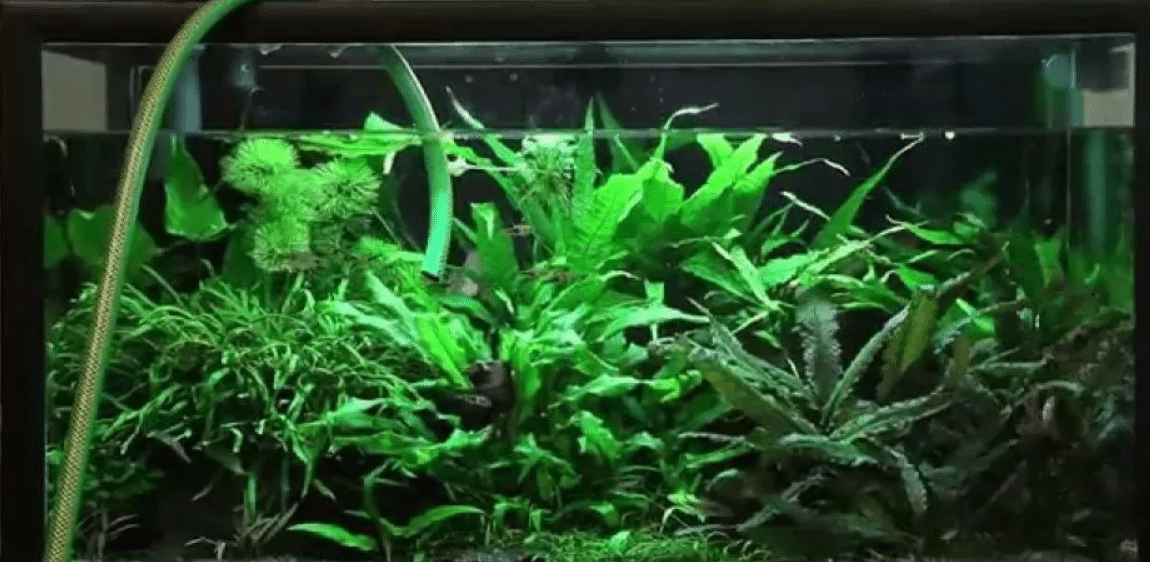
The water change is irreplaceable for the hygiene in the aquarium, because old water and waste materials contained in it are regularly replaced by new water. Depending on the size of the tank, the stocking and the quantity of aquarium plants, such a water change should take place at least every two weeks, at best even weekly. If this partial water change is carried out too seldom or at too irregular intervals, the waste substances in the aquarium, which for example result from overfeeding, are not removed. This serves as an optimal culture medium for algae in the aquarium and inevitably leads to their formation. If one wants to avoid algae in the aquarium, one should therefore carry out a weekly partial water change, in which one changes approx. one third of the aquarium water.
Algae growth caused by fertilization

It is well known that aquatic plants are only able to absorb a certain amount of nutrients. Of course, this also includes the excrement of shrimps and fish, which can be found as a natural fertilizer in almost every aquarium. If you use additional fertilizer in the aquarium, you should be aware that an excess of fertilizer can no longer be absorbed by the aquarium plants – this is then used exclusively for the development of algae. In contrast to other plant species, algae can absorb almost unlimited amounts of fertilizer and can therefore develop splendidly with the help of the fertilizer.
However, a lack of fertilizer also has a negative effect on the aquarium: on the one hand, the plants suffer from a lack of nutrients, which can be noticeable, for example, by grey spots on the leaves, and on the other hand, this can promote the formation of algae, which have specialized in a lack of nutrients. The green algae, for example.
Algae growth caused by the illumination time
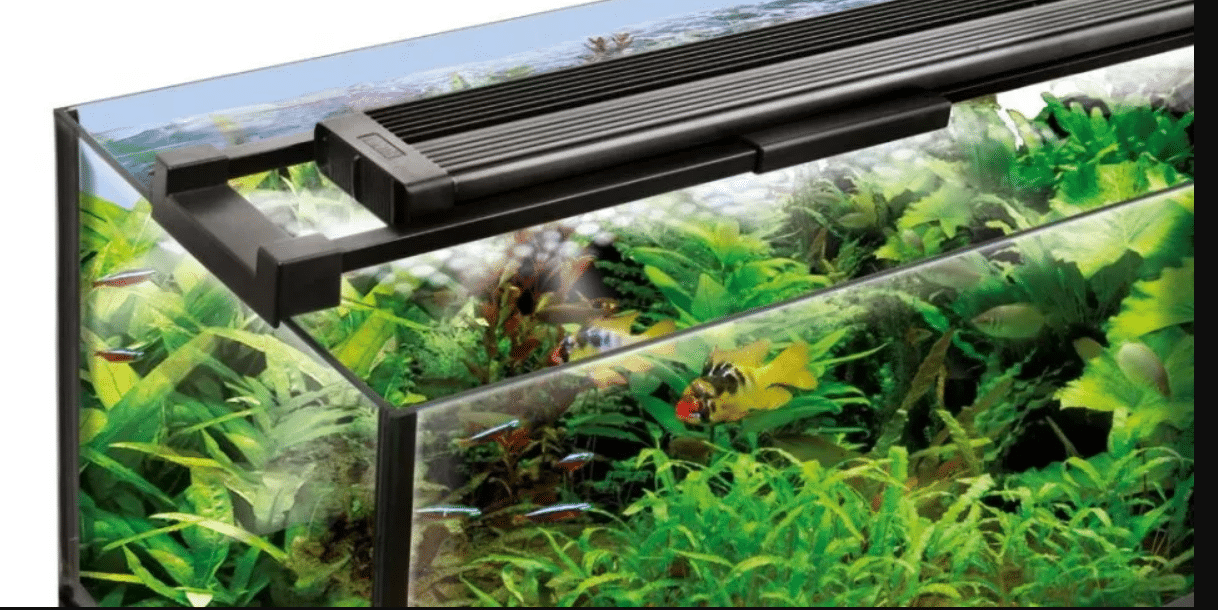
For the inhabitants of the aquarium, the lighting is rather unimportant, however, it represents a vital factor for the plants of the aquarium again. After all, plants can only grow and thrive with the help of lighting.
Basically, the aquarium should be lit for a maximum of 12 hours a day. The lighting time depends very much on the structure of the tank, the aquarium inhabitants, the plants and many other factors. A tropical, South American aquarium with dense planting, for example, certainly does not need more than 10 hours of light per day. It should also be noted that plants need different lengths of time to carry out photosynthesis. If the lighting is disturbed during this time, for example by a pause in lighting, the plants can become very damaged, so that they no longer grow well. As a result, the growth of algae in the aquarium is favoured. In turn, too long an illumination period can also lead to plants in the aquarium no longer being able to grow optimally due to a lack of nutrients. This also favours the growth of algae, as they can use the additional light almost indefinitely.
Algae growth due to the flow rate of the aquarium filter

Some external filters allow the flow rate to be checked. For example, in the case of smaller pools, the flow rate to be achieved is slightly reduced in order to ensure a lower flow rate. Ultimately, however, a lower flow rate is accompanied by a lower flow rate, which means that fewer pollutants/wastes can be purified. And as already described above, an excess of nitrate in the aquarium can no longer be managed by aquarium plants at a certain point, which is why algae can develop. However, too high a flow rate can also cause algae to form in the aquarium, as too much nitrate is now absorbed by the filter and therefore too few nutrients for plants are contained in the aquarium – a nutrient deficiency that promotes the growth of algae.
algae growth caused by windows near the aquarium
The environment in which the aquarium was set up also plays an important role with regard to algae. Direct sunlight or light temperature, just like aquarium lighting itself, serve as a nutrient for plants. If, however, the aquarium plants now have an abundance of light at their disposal, which for example results from the direct sunlight of a window in combination with the aquarium lighting, they can no longer use the additional light from a certain point in time, which favours the growth of algae in the aquarium.

Why are algae so unpopular in aquariums?
A question that some aquarists may have asked themselves when they fought with the acquired chemical warfare agent against the wicked algae. But the question “Why are algae so unpopular in the aquarium? Algae are often also called “weeds” in the aquarium and also have a negative effect on the aquarium with their appearance. But not only their unattractive appearance contributes to the unpopularity, also some rumors circulate in various Internet forums: so they are sometimes said to be toxic. Algae, especially those frequently found in aquariums, are not toxic – neither to humans nor to other aquarium inhabitants. Most aquarists are simply annoyed by the infestation of other aquarium plants. Of course, after all, they invest a lot of money in new plants, if they are now attacked by grey or green fur or brush algae, the anger is great. Nevertheless, algae are not harmful to the aquarium: there are even aquarists who deliberately breed algae in the breeding tank and thus do without other aquarium plants.
Are algae harmful to your aquarium?
Basically, algae should belong in an aquarium, because an aquarium without algae can not exist. Thus, algae can also live in a basin in which they are not obviously visible. In such a case one speaks then of single-celled organisms, which are to be found exclusively in the biofilm of the aquarium. A biofilm, consisting of algae and other microorganisms, appears on all surfaces of the aquarium and thus maintains the ecological balance. In addition, the biofilm is used to feed growing animals in the aquarium.
Particularly during the running-in phase of the new aquarium, the formation of algae can increase, a phenomenon that is quite normal. Most aquariums go through two initial algae phases: first diatoms are formed and then mostly green algae.
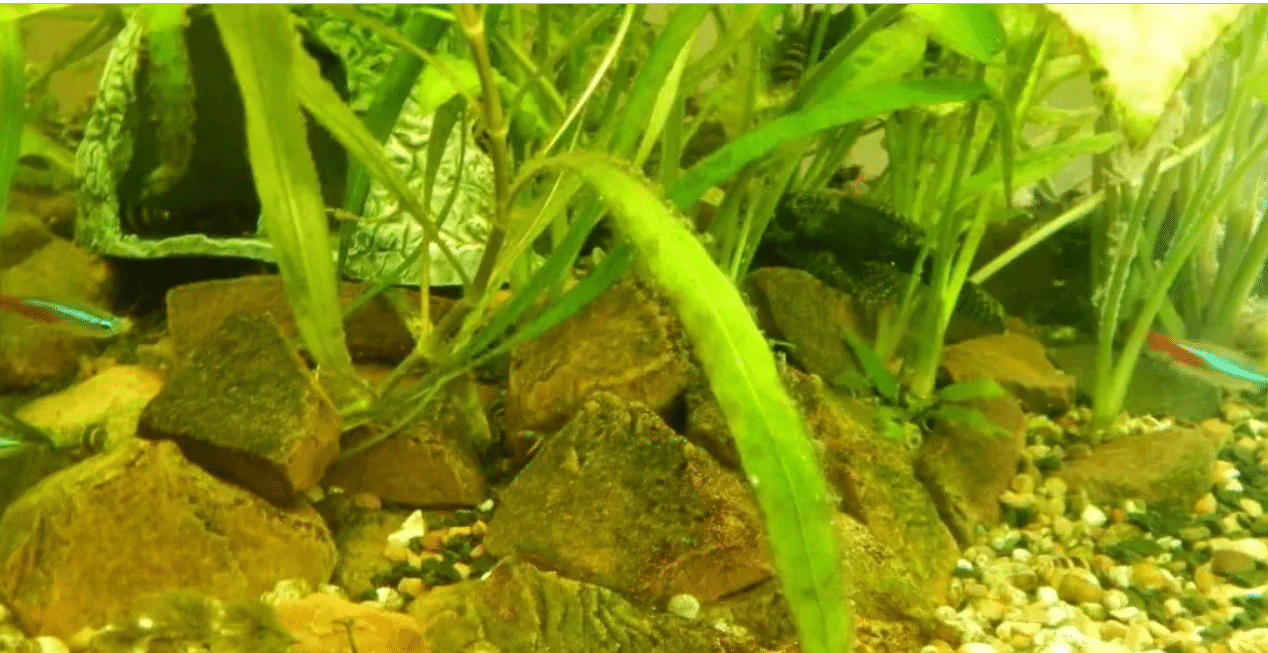
How to avoid and fight algae in the aquarium?
There are different ways to fight the algae, either using conventional fertilizers, making changes to the aquarium technology or lighting conditions, or trying to combat the algae infestation by chemical means. In the following, we show the most important possibilities for effectively combating algae in the aquarium.
Aquarium fertilizer
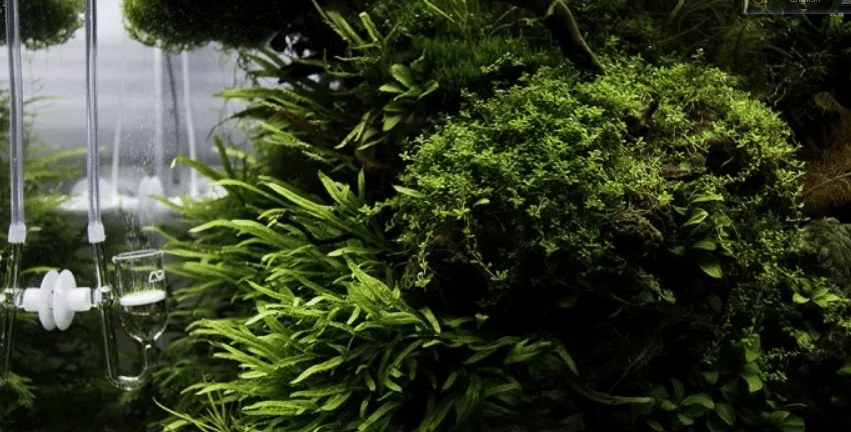
Surely many aquarists know the problem of plants that simply do not want to grow. Of course, the first thing you can find on the Internet is not far from your own thoughts: use additional aquarium fertilizer to provide the plants with more nutrients.
In general, the use of fertilizers for plants is almost irreplaceable and many basins require them simply because they are characterized by a lack of nutrients. This can already occur, for example, if the tap water contains too few nutrients – these must then of course be added.
If one would do without the addition of the nutrient, the plants would look unhealthy on the one hand (grey/brown spots on the leaves are often to be observed) and on the other hand badly/not grow. This in turn results in a reduced overall consumption of nutrients in the aquarium, which favours the growth of algae as they absorb the additional nutrients gratefully.
Nevertheless one should not use the next arbitrary fertilizer in the aquarium, only because on it beautifully growing plants are illustrated. You should analyse your water values in advance with a test set, at best you do exactly the same with the tap water. This is the only way to detect a possible nutrient deficiency and counteract it with a special fertilizer.
If you simply fertilize any fertilizer, for example because a picture of your plants is shown on it, the chance is very small that you actually add the right nutrient to the tank. There is a much higher chance that an excess of other components will be added to the tank, which the aquarium plants will not be able to process – an optimal breeding ground for algae.
Aquarium Technology

Algae can also be controlled with the help of aquarium technology. An algae plague can be caused by the light conditions in the aquarium but also by the flow rate of the (external) filter. Below we show you what you can regulate in your technique to avoid algae.
This can, as already described above, be naturally too high, whereby on the one hand nutrients of the plants land in the filter and on the other hand some flow-loving species grow, but on the other hand to be too low: here the problem is obvious, too little water is cleaned.
Regulate aquarium lighting
Above all the lighting of the aquarium can certainly favour the formation of algae in the aquarium and should therefore always be closely watched. For example, too little light in the aquarium results in a lack of nutrients for the plants, while too much light produces a surplus of nutrients: both optimal for the formation of algae.
The type of lighting should also be taken into account. For example, fluorescent tubes should be changed more frequently, while the luminosity of the LED should be partially regulated if it has such a function.
The following should generally be observed with the correct lighting:
-New, contemporary lighting system: LED lights (adjustable at best)
-Matching lighting duration: Maximum 10-12 hours!
-place of the aquarium: no direct sunlight
-plant aquarium plants in real silence
The lighting duration plays an important role: for example, it can be helpful to shorten it, or to take a break from lighting to combat the algae in the aquarium. In an aquarium infested with algae, an illumination of eight hours is ideal in combination with a fertiliser. With the help of a short lunch break, one also gets some of one’s animals in the evenings. A lighting duration of over twelve hours is again not recommended. This is only necessary in exceptional cases, but not for most planted aquariums.
As far as plants are concerned, care must also be taken to place them in certain zones. Large plants, for example, should be placed in the background of the tank, while smaller plants should be placed in the middle or in the front. If the plants are planted in the wrong place, it can happen that they cast too much shadow and other plants receive too little light.
Aquarium Filter Regulate flow rate
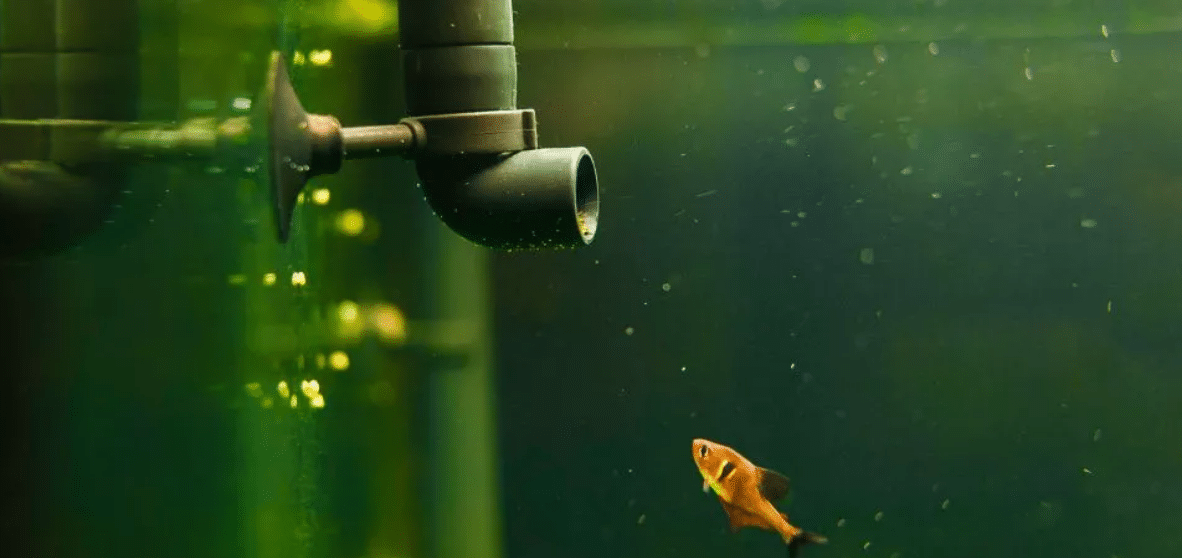
The aquarium filter can also favour the growth of algae. Basically a too weak filter, i.e. a too low flow rate per hour, can lead to infestation of algae, because it is simply not able to remove enough nitrate/waste in the water. From a certain point in time this also becomes too much for the aquarium plants: they cannot process the excess of nutrients, which results in algae.
But also a too high flow rate in the aquarium filter is counterproductive. Thus, important nutrients that plants need for their growth cannot be absorbed because the filter absorbs them. This happens especially when the filter is too large and at the same time equipped with a large amount of filter media.
How big your filter should be for your aquarium, or how much water it should circulate per hour, cannot be said in general, because this depends on many factors, such as the stocking or the lighting time. You should always follow the manufacturer’s instructions and make your own experience with the filter. If algae develop, reduce the flow rate and wait for the result. It can also help to greatly increase the flow rate and at the same time remove some of the filter media.
plants

When fighting algae, it is particularly important to control the aquatic plants: for example, in the case of strong algae growth, it is advisable to resort to aquatic plants with a high appetite for nutrients. These are mostly fast-growing aquarium plants, such as hornwort. This is a real insider tip when it comes to combating green algae, as it absorbs a lot of nutrients and grows extremely quickly.
algae eater
Algae can also be controlled by the aquarium inhabitants. Thus there are the most different fish kinds, as well as shrimps, crabs and catfish which can be integrated ideally into the aquarium and contribute beyond that to the fight against algae.
Note however: You should never extend an already occupied aquarium by one of the following species, just because they eat algae. The stocking of a new species in an aquarium should be well considered, one should be very well informed about the animals to ensure that they fit the other inhabitants.
Amano shrimp
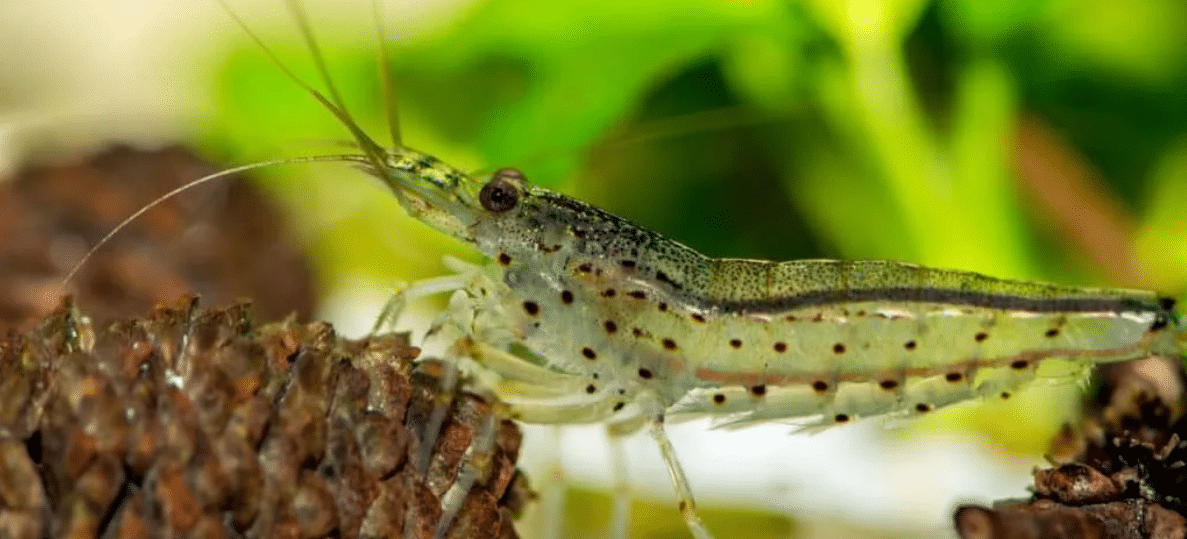
The Amano shrimp in particular is often used in aquariums, as it can be used very successfully against algae and is particularly suitable for a plague of thread algae. The socialisation of the Amano shrimp with other fish is not a big problem either. In addition, the Amano shrimp is definitely suitable for beginners and does not make particularly high demands on the water quality. However, Amano shrimps should not be kept in tanks smaller than 80 centimetres in edge length: the animals grow to a good 5-6 centimetres in adult size and should be kept in groups – clearly too large for small aquariums.
catfish
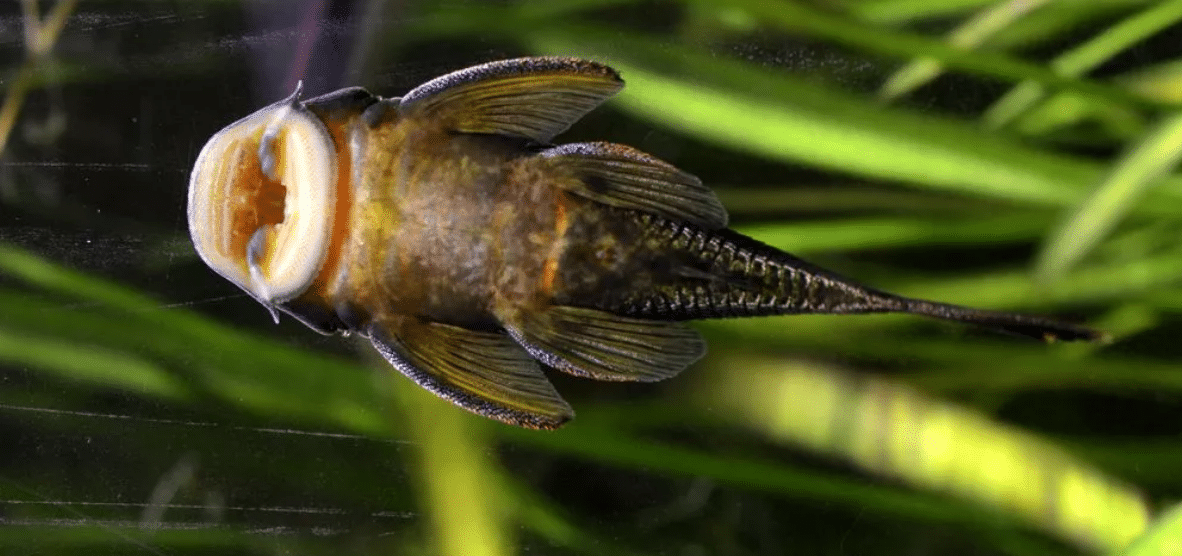
Also on the menu of some catfish are algae. For example, many catfishes of the sucking catfish genus as well as the antenna catfish ensure an algae-free aquarium. In addition, many catfish also bring an interesting behavior and a great look into the aquarium. However, it should be mentioned here that herbivorous catfish not only eat algae, but also leaves from aquariums plants and can damage your plants. In addition, many of the catfish species available in pet shops are clearly too big for small aquariums – a small overview for catfish that can be kept in small tanks can be found here.
snails
Most snail species regard algae as a source of food. Since most snails also remain relatively small and mostly peaceful, they are my recommendation if you are looking for an algae eater. But be careful here too: the stocking of your snails should remain controlled, otherwise you’ll be fighting a snail plague tomorrow which will destroy your aquarium plants.
Remove algae manually

Another way to combat algae is manual removal. However, stamina is required here, as the pool must be completely cleaned manually of unwanted algae – a very time-consuming manual process. This is associated with regular controls of algae growth, as the development of algae is extremely rapid. Depending on the type of alga you have, you may want to use either the manual method or a combination of the above suggestions. For example, some aquarists boil their decorative objects so that in the end nothing remains of the algae.
Anti-algae agent

If nothing works anymore, the following possibility to fight algae is still not a recommendation, because anti-algae products are first of all almost always an ineffective marketing gag and it can also harm your aquarium inhabitants. If the dosage is not correct, fish, snails and catfish suffer and often fail. In particular, the tolerability of invertebrates should be taken into account.
Anti-algae products can be purchased in a wide variety of forms, but they often have two things in common: on the one hand they promise safe control of algae and on the other they are often based on one substance: copper. And copper not only removes algae, but is also harmful to fish stocks and all aquatic plants.
The most important algae species in the aquarium and how to fight them
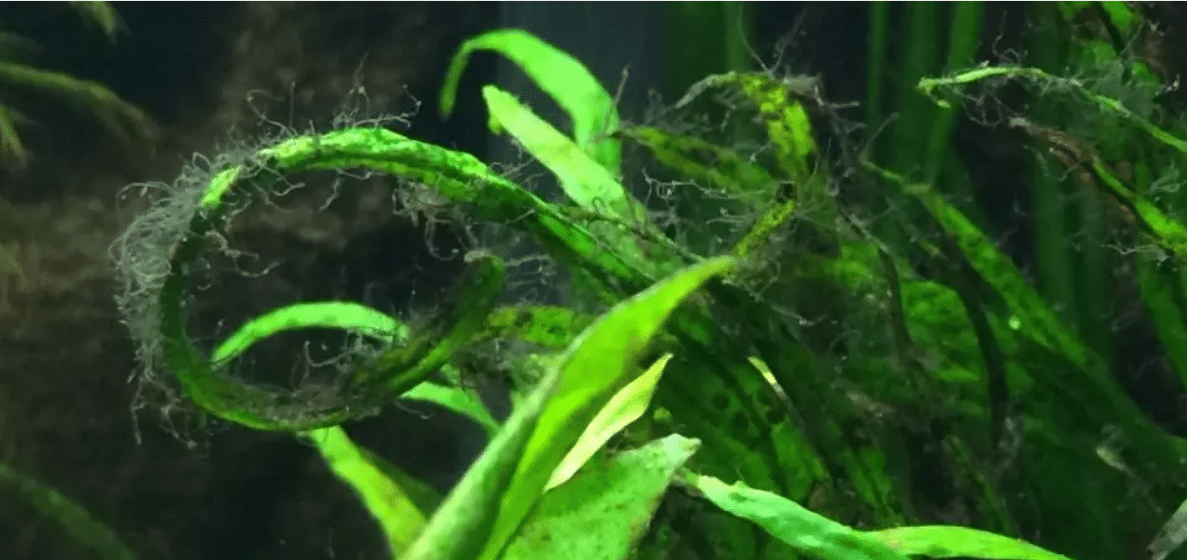
Also in our aquariums there are innumerable different algae species. If you want to fight the algae in your aquarium, nothing is more important than to know for sure what species it is. Because while some of the above methods of removing algae damage one species, it can provide another species with the perfect breeding ground. Below you will find the most common algae species and strategies to combat them.
Green algae and fur algae – how to fight them
Green algae are usually created by an excess of nutrients in the aquarium, which cannot be used by the aquarium plants. However, as a rule they still indicate good water quality. In most cases, this excess of nutrients is caused by additional sunlight, for example through a window near the aquarium. Green algae very often occur in the form of small green dots on the disc of the aquarium. They also often infest plants and the decoration of the basin, but then in the form of algae threads. Green algae are not harmful for the aquarium inhabitants, they are rather so unpopular because of their unattractive appearance.
In order to combat green algae effectively, you should first go to troubleshooting. This is the only way to see what causes the excess of nutrients in the aquarium. A test set to test the water values in your aquarium is unavoidable.
-
- Check the lighting of the aquarium.
-
- If green algae are infested, the lighting should be reduced to 8 hours (by means of a lunch break).
- If the aquarium is set up close to a window and thus irradiates direct sunlight, either the aquarium must be removed or the window darkened during sunlight.
-
- Check the lighting of the aquarium.
-
- Reduce fertilization in the aquarium: By means of a test set one can find out the surplus of nutrients – for example my aquarium suffered from green algae for quite a while, because too much phosphorus was added to the tank due to an NPK fertilizer.
- Add less fertilizer to the tank for a while and check the algae population after a while.
- Reduce fertilization in the aquarium: By means of a test set one can find out the surplus of nutrients – for example my aquarium suffered from green algae for quite a while, because too much phosphorus was added to the tank due to an NPK fertilizer.
-
- Reduce the flow velocity of the filter: Green algae are flow-loving and often form directly in front of the filter outlet.
-
- Remove as many green algae by hand as possible
- Especially the panes are mostly infested with green algae, which should be removed weekly during the partial water change.
- Remove as many green algae by hand as possible
-
- Remove more water at the next partial water change (change 50% of the water instead of one third).
- If all this does not help, the stocking in the aquarium should be reduced.
Blue-green algae and how to fight them

Blue-green algae usually develop due to a lack of nutrients in the aquarium. If, for example, too little phosphate is contained in the aquarium, the aquarium plants do not thrive properly, which is why blue-green algae are usually produced, which can utilize the other nutrients. It is not uncommon to observe that blue-green algae develop in well-lit places near the bottom of the soil when food remains or manure residues are available there.
The infestation leads to the growth of a slimy, blue-green coating on the surfaces in the aquarium and on the bottom. These algae virtually devour all nutrients in the aquarium and usually lead to the extinction of the aquarium plants after only a short time. It is therefore of great importance to identify and combat this alga as early as possible.
-
- Additional fertilizing: it is absolutely necessary to check the macro-nutrients in the aquarium by means of a test set in order to detect a nutrient deficiency. For example, if your aquarium lacks phosphate, you can add it weekly using an NPK fertilizer.
-
- Carry out a dark cure: the aquarium should be completely darkened for a certain time, usually one week. This is done by covering the pool itself with a black foil or black cardboard and of course deactivating the lighting. With this technique, the annoying blue-green algae can first be removed – now, however, the cause of the development must be combated, since it is only a matter of time before the algae develop again.
-
- Add potassium
- Use algae-eating species: This method should be well thought out, because the following species should also fit to your stocking of course
-
- Inserting tower cover screws
-
- Amano shrimps / dwarf shrimps insert
- Use Siamese snout barb / brush algae eater
-
Bearded algae and how to fight them

As the name already shows, the appearance of the beard algae resembles the beard hairs, whereby the reddish coloring develops only with addition of alcohol. Bearded algae settle mainly in the filter, but also on aquatic plants and decorative objects. The beard algae is an extremely robust alga whose formation in the aquarium should be avoided in any case – once the alga has settled in the tank it is not easy to remove it.
Once the alga has formed in your aquarium, you can do the following to fight it:
-
- Bearded algae are flow-loving: for this reason the flow rate of the filter should always be checked and if possible reduced.
-
- Bearded algae should always be manually removed from the aquarium.
-
- If plants are infested, they should be removed.
-
- If decoration is infested, the beard algae should be scraped off – this is simply possible with a razor blade, for example.
- Many an aquarist also cooks up decorative items to completely remove the beard algae from them; an elaborate but effective method.
-
- Bearded algae should always be manually removed from the aquarium.
- Use algae-eating species: This method should be well thought out, because the following species should also fit to your stocking of course
-
- Inserting tower cover screws
-
- Amano shrimps / dwarf shrimps insert
- Use Siamese snout barb / brush algae eater
-
Brush algae and how to fight them

The brush algae is one of the worst algae plagues and is caused by an excess of nutrients and a lack of carbon dioxide (Co2). If the brush alga appears in the aquarium, fast action is required, because once the alga has spread in the aquarium, the removal becomes very difficult and costly. The brush alga can be easily recognized because it appears in the form of black or dark green tufts in the aquarium, which are about 1 centimeter high. It attacks all objects in the aquarium: from decoration to filter to plants.
Brush algae are so common because they grow particularly hard on these objects; if, for example, a brush alga has grown on a plant, it will hardly come loose from the leaves of the plant – the plant then often has to be removed completely.
If the brush alga has spread into your aquarium you can do the following to fight it:
-
- Absolutely Co2 fertiliser: This can be done by means of a simple Co2 plant or a Co2 liquid fertiliser – in the following our two recommendations. The Co2 content in the water should optimally be between 20-30 mg/l.
-
- Remove as many brushes as possible manually
- Use algae-eating species: This method should be well thought out, because the following species should also fit to your stocking of course
-
- Inserting tower cover screws
-
- Amano shrimps / dwarf shrimps insert
- Use Siamese snout barb / brush algae eater
-
Thread algae and how to fight them

Thread algae can generally be assigned to the family of green algae. Like the green algae mentioned above, they are formed due to a surplus of nutrients. This can be due to a very strong illumination but also to a strong fertilization. In contrast to green algae, thread algae form small threads of different lengths, which cover the root system as well as entire plants and decorative objects.
In order to fight the thread algae you should orientate yourself to the fight against the green algae.
Diatoms and how to fight them

The diatom is easily recognisable by a thin, brownish layer on the aquarium glass and green-black dots on the plant leaves. Often this alga is formed when a new aquarium is brought in – here we can actually speak of the diatom phase, as the chances of getting to know the alga are relatively good. In contrast to other algae in the aquarium, the diatom is easy to control, because without the silica of the same name, it perishes:
-
- Reduce silicic acid in the aquarium – this can happen as a consequence:
-
- If there is another aquarium available that has already been run in, its filter mulm should be placed in the filter of the new tank and in the new tank. A small amount of this is already sufficient to significantly accelerate the running-in phase of the new aquarium.
- Add water to osmosis (especially when the basin is retracted). This should be available in your local pet shop and will be added to the aquarium when changing partial water.
-
- Reduce silicic acid in the aquarium – this can happen as a consequence:
-
- Increase lighting in aquarium
- Remove diatoms manually
Dust algae and how to fight them

The slimy shape of the dust algae is caused by sudden changes in the structure of the aquarium. For example, the light conditions, the flow rate of the filter or the amount of Co2 is suddenly drastically changed. The dust algae can simply be wiped off, but beware, because a greenish dust develops as a result, which causes a new settlement after only a few hours.
The green disk plague, as the dust alga is also called, is a real plague and should be eaten out for three or four weeks. After all, the life cycle of the dust algae ends and they are eaten by predators such as snails or fish.
Hair algae and how to fight them

The hair alga with a length of almost three centimetres appears in the form of soft, cotton wool-like cushions. Your natural predator, including the Amano shrimp or the tower snail, loves this algae species and protects your aquarium.
Conclusion – Algae in the aquarium
Algae in the aquarium are certainly a nuisance for many an aquarist – after all, you invest a lot of money in beautiful aquarium plants. If these are now covered with unsightly green or grey algae, the frustration is naturally great. But this does not necessarily mean the end of the hobby, because there are many ways to get rid of the algae plague in the aquarium and there is also a solution for every type of algae. Usually only patience and a little tact is required and after some time and the right aids one gets rid of the unpopular aquarium inhabitants also again. In addition, the alga does not always have to be regarded as the number one enemy in the aquarium, because it is actually important for the biological balance in the aquarium and often anything but harmful.



